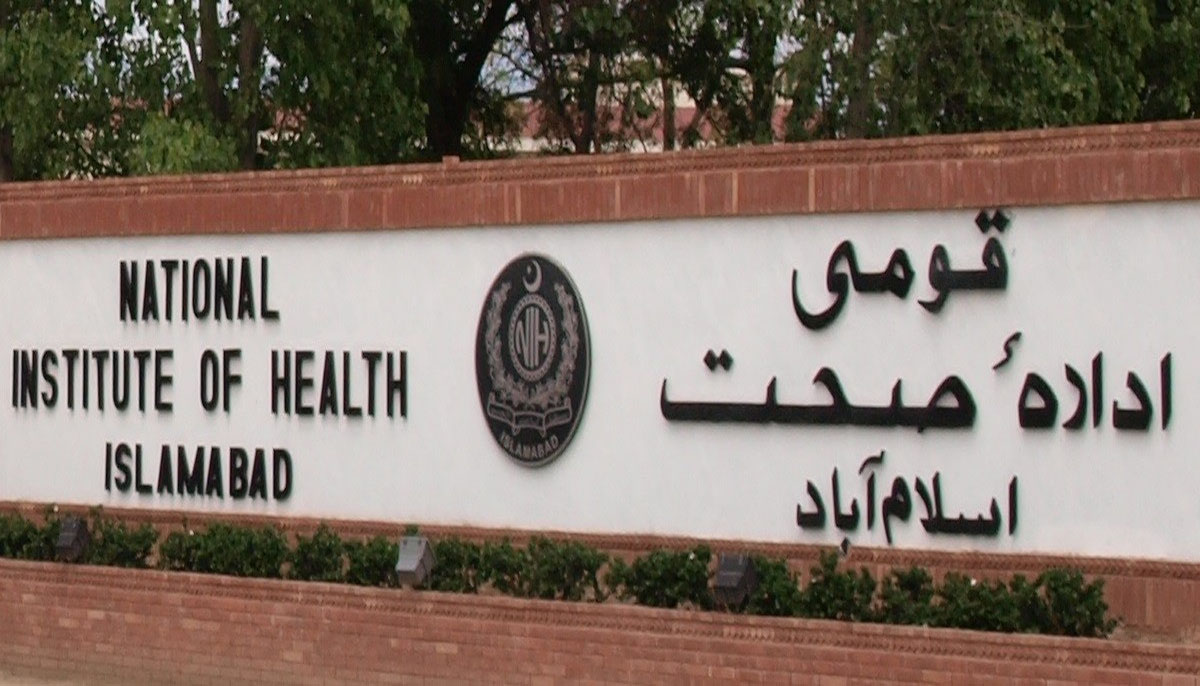NIH issues advisory for prevention of CCHF, Covid-19 around Eid
Islamabad: The movement of sacrificial animals ahead of Eidul Azha significantly carries the risk of the spread of Crimean-Congo Hemorrhagic Fever (CCHF) due to increased human-animal interaction. Moreover, visits to crowded places and direct contact with infectious materials and animals are also expected to amplify the risk of COVID-19 transmission.
Recognising the threats, the Field Epidemiology and Disease Surveillance Division (FEDSD) of the National Institute of Health (NIH) has issued an advisory, alerting various stakeholders including human and animal healthcare providers to take timely steps for the prevention and control of CCHF and COVID-19.
The advisory lists several instructions that need to be adopted for the prevention and control of CCHF since there is currently no vaccine available for the disease.
The instructions include use of full sleeves and light colored clothes, gloves, face masks, and hand sanitizers, practicing of social distancing during visit to cattle markets; frequent hand-washing and hand sanitization to disinfect and clean hands; avoidance of all crowded places including large family gatherings during EID and sacrifice of animals; and thorough washing of hands with soap after coming in contact with animals or their blood.
Moreover, NIH has also issued its 48th Seasonal Awareness and Alert Letter (SAAL) for epidemic-prone infectious diseases. The letter exhibits patterns of high-priority communicable diseases including Cholera, Coronavirus diseases (COVID-19), CCHF, Dengue, Leishmaniasis, Malaria, Measles, Polio and Typhoid XDR.
These diseases are predicted to be on high alert during the said season. It also contains detailed introduction of diseases, case definitions, infectious agents, modes of transmission, case management and prevention.
The main purpose of SAAL is to alert all concerned health authorities and professionals at all levels and to facilitate them for timely and efficient response to outbreaks/epidemics. This letter is developed for summer/monsoon from June to September. NIH has advised the federal, provincial and district health departments as well as other stakeholders to keep a continuous watch on the anticipated seasonal public health threats and to take all preventive or curative measures in this context.
To facilitate stakeholders, the requisite technical guidelines and awareness material regarding infectious diseases along with SAAL and CCHF advisory are available at the NIH website www.nih.org.pk.
-
 Harry Styles Excites Fans As He Announces Release Date Of New Song
Harry Styles Excites Fans As He Announces Release Date Of New Song -
 Japan’s Ex-PM Shinzo Abe’s Killer Is Set To Be Sentenced: How Much Punishment Could He Face?
Japan’s Ex-PM Shinzo Abe’s Killer Is Set To Be Sentenced: How Much Punishment Could He Face? -
 Prince Harry, Meghan Markle’s Return To UK Could Create Royal Family Dilemma
Prince Harry, Meghan Markle’s Return To UK Could Create Royal Family Dilemma -
 Prince Harry Turns Troubled With No Sense Of Home: ‘Isolation Is Getting To Him Mentally’
Prince Harry Turns Troubled With No Sense Of Home: ‘Isolation Is Getting To Him Mentally’ -
 Vitamin D Link To Respiratory Diseases Will Shock You
Vitamin D Link To Respiratory Diseases Will Shock You -
 A$AP Rocky Gives His Take On Children's Budding Personalities
A$AP Rocky Gives His Take On Children's Budding Personalities -
 Elijah Wood On Return To 'Lord Of The Rings' Universe
Elijah Wood On Return To 'Lord Of The Rings' Universe -
 Princess Beatrice, Eugenie Resort To Begging Sarah Ferguson: 'It'll Bring Disaster For The Whole Family'
Princess Beatrice, Eugenie Resort To Begging Sarah Ferguson: 'It'll Bring Disaster For The Whole Family' -
 Jenny Slate Hails Blake Lively Amid Lawsuit Against Justin Baldoni
Jenny Slate Hails Blake Lively Amid Lawsuit Against Justin Baldoni -
 Sophie Wessex Shares 'frustration' From Early Days In Royal Family
Sophie Wessex Shares 'frustration' From Early Days In Royal Family -
 Jason Momoa's Aquaman Unseen Snap Revealed
Jason Momoa's Aquaman Unseen Snap Revealed -
 Prince Harry Taught Only Way King Charles 'will Take Him Seriously'
Prince Harry Taught Only Way King Charles 'will Take Him Seriously' -
 Meghan Markle’s Reaction To UK Talks With Prince Harry Comes To The Forefront: ‘Leaving Me?’
Meghan Markle’s Reaction To UK Talks With Prince Harry Comes To The Forefront: ‘Leaving Me?’ -
 Taylor Swift Slams Justin Baldoni In Explosive Text Messages, Court Filing Reveals
Taylor Swift Slams Justin Baldoni In Explosive Text Messages, Court Filing Reveals -
 Blake Lively’s Drops New Allegations Against Justin Boldoni About Birth Scene
Blake Lively’s Drops New Allegations Against Justin Boldoni About Birth Scene -
 Andrew's Reasons For Giving Sarah Ferguson A Rent-free Home For 30 Years After Divorce Finally Finds An Answer
Andrew's Reasons For Giving Sarah Ferguson A Rent-free Home For 30 Years After Divorce Finally Finds An Answer




